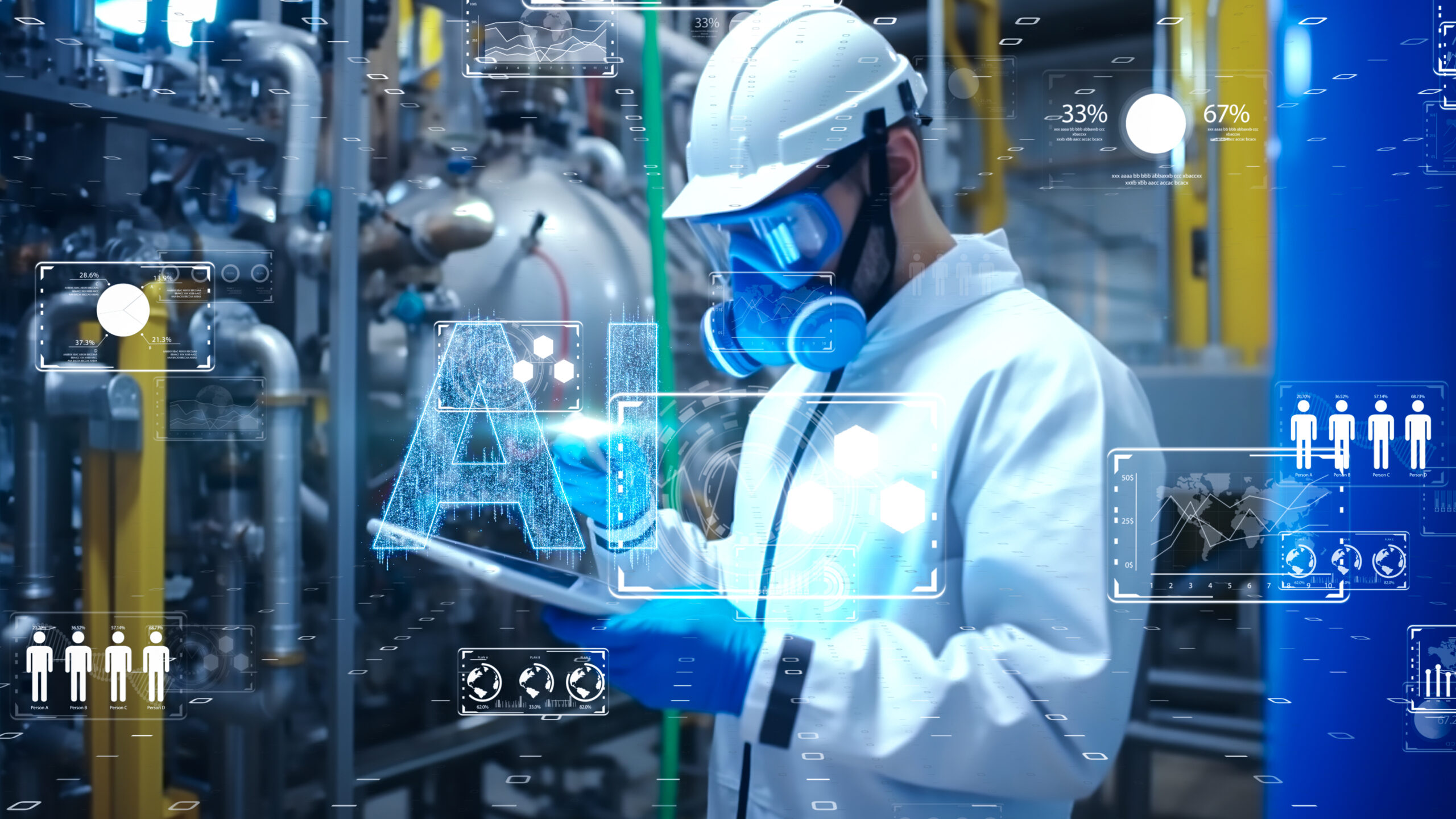The past three years have witnessed the transformation of the chemicals and materials industry from its traditional approach of stand-alone R&D and processing/manufacturing to a more inclusive one that incorporates data-driven research, customization, and cross-industrial collaborations to develop and manufacture advanced chemicals and materials to meet the ever-changing demand of end applications. Despite the increase in collaborative approaches, the industry still faces challenges in its R&D activities, which are still time-consuming and resource-intensive.
Further, companies are under pressure to produce advanced chemicals and materials that not only meet the performance requirements but also are in line with the sustainability initiatives of stakeholders. Similarly, chemicals and materials manufacturing is an intricate process that faces challenges in maintaining process control, especially when trialing new processing and manufacturing technologies, reducing adverse environmental impact, and navigating a competitive scenario. Manufacturers still struggle to overcome issues related to operational inefficiencies, environmental compliance data management, and developing niche chemicals and products that stand out amongst the competition while addressing customer expectations.
The recent success of generative artificial intelligence (GenAI) has impacted most industries, and the chemicals and materials industry is not an exception. While the adoption of GenAI tools in this industry is not as extensive as in other industries, the potential of GenAI in the industry is promising. Implementing GenAI can significantly transform operations by increasing productivity, efficacy, and ecological sustainability.
Exhibit 1: Transformative Aspects of GenAI in the Chemicals and Materials Industry

Application of GenAI in Chemicals and Materials R&D:
The development of chemicals and materials involves the analysis of diverse sources of data to understand specific requirements and challenges that the intended materials/chemicals need to address. While manual scanning of scientific literature for relevant information on formulations has been replaced by analytical tools to a certain extent, interpreting complex material properties from experimental data is still difficult. While computational models that can reliably predict complex material behaviors and properties are available, often they lack the predictive capabilities that are required for interpreting various molecular interactions and environmental factors, which can reduce the need for resource-intensive experimental validation.
The current R&D process still relies largely on the manual design of experiments which involves numerous trial-and-error iterations and manual interpretation of intricate characterization data, which can lead to model accuracy uncertainties and overlooking the subtle patterns and correlations in large datasets. The complexity and computational intensity of simulating molecular interactions can also prolong the time needed for prototype simulation and predicting material behavior on a larger scale. The transition from laboratory to pilot-scale and real-time testing involves various new variables and complexities, which can be difficult to interpret and can influence results and product development efforts.
Use of Natural language processing (NLP) to sift through large amounts of literature and data, extract relevant information, and identify correlations – that might otherwise go unnoticed – to discover unnoticed patterns and relationships. AI-powered simulations can efficiently explore a wide range of scenarios and interactions, resulting in more precise modeling outcomes and improved predictions of material properties and behaviors and structure-property relationships.
One of the advantages of GenAI is that it can help in predicting optimal experimental conditions and material compositions based on data-driven insights, improving experimentation efficiency and effectiveness, reducing the margin of error, and resulting in faster material discovery and innovation. By helping to predict potential challenges and outcomes at scale, providing findings that guide researchers in optimizing pilot-scale processes, and avoiding possible risks, GenAI tools can improve the efficiency and effectiveness of pilot-scale testing, reducing the number of costly iterations and accelerating the successful transition of innovation from lab to real-time testing and production.
Exhibit 2: Impact Analysis of GenAI in Chemicals and Materials R&D

Application of GenAI in Chemicals and Materials Manufacture:
The intricate task of designing and optimizing chemical reactions and processes that efficiently transform raw materials into desired products is critical to achieving the intended results. Customizing the manufacturing process to produce the required chemical or material considering scalability, resource usage, and environmental impact while navigating the complicated landscape of reaction kinetics, thermodynamics, and safety concerns, is still a significant challenge for the industry.
The successful transition from pilot-scale to commercial-scale production entails considering careful planning for addressing various complexities associated with process upscaling, managing higher production volumes, and maintaining product integrity. It also involves managing iterative and time-consuming optimization efforts to ensure product quality, safety, and resource utilization while complying with safety regulations. Testing and validation also involve complex standardized testing protocols, data analysis, and ensuring consistent results across batches. Therefore, a delicate balance of various factors, right from raw material sourcing to process design and optimization to managing waste reduction, ensuring energy efficiency while maintaining the integrity of the material/chemical being manufactured is to be maintained.
GenAI, with its ability to rapidly analyze vast datasets of material properties, supplier information, etc. suggests optimal raw material choices that are aligned with production and regulatory requirements. It can help in streamlining a wide range of process variations and parameters, thereby predicting potential outcomes, and identifying optimal configurations that achieve desired performance metrics for more efficient, sustainable, and cost-effective manufacturing.
GenAI tools can model different scaling scenarios, predict potential challenges, and optimize process parameters using their data analysis and simulation capabilities to expedite the scaling process, enabling manufacturers to define optimal strategies for the mass production of chemical compounds or materials. They can also help in optimizing plant performance by real-time monitoring of variables, identifying deviations, and recommending adjustments based on data analysis and predictive capabilities to improve process automation and control.
Exhibit 3: Impact Analysis of GenAI in Chemicals and Materials Manufacture and Processing

Conclusion:
The chemicals and materials industry has been increasingly deploying digital technologies for optimizing various tasks. However, their adoption is nascent in R&D and manufacturing processes when compared to their use in supply chain, logistics, and customer interactions. Tier 1 companies across the globe are actively exploring the prospective use of GenAI tools for various tasks. Collaborations with platform developers for customizing solutions to address specific R&D challenges and to streamline product and process parameters are on the rise and can help in the exploration of GenAI and other digital technologies for various processes.
The academia is not far behind with research institutes and universities exploring the use of GenAI tools for R&D, testing, and material characterization and optimization. The combination of innovation efforts can help in improving the prospects of GenAI tools in the chemicals and materials industry. However, it is also important for stakeholders to prioritize data security and ethical compliance to prevent misuse of the tool. Additional training and upskilling programs and fostering an environment of innovation and experimentation can go a long way in improving the adoption of GenAI and leveraging its capabilities to address industry challenges and meet end-user demands.
Blog By: – Aarthi Janakiraman, Research Director; and Abhishek Paul Choudhury, Senior Research Analyst, TechVision, Frost & Sullivan
Blog Received On Mail By Frost & Sullivan















